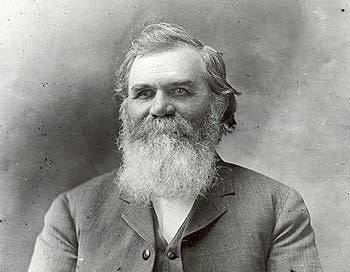D.D. Palmer, the founder of chiropractic, introduced the concept of "tone" as a foundational principle of his philosophy, articulated around 1896 and developed through his writings until his death in 1913. For Palmer, tone represented the normal degree of nerve tension, vitality, and functional harmony within the body’s tissues, essential for health. He stated, “Life is the expression of tone. In that sentence is the basic principle of Chiropractic. Tone is the normal degree of nerve tension. Tone is expressed in functions by the normal elasticity, activity, strength and excitability of the various organs, as observed in a state of health.”
Key Aspects of Palmer’s Tone Concept
Definition and Role in Health:
Tone is the optimal state of tension or firmness in nerves, muscles, and organs, enabling proper transmission of neurological impulses and coordinated bodily functions.
Palmer viewed tone as a balance between “too tense” (hyperfunction) and “too slack” (hypofunction), with deviations causing disease. He argued that any variation in tone—due to excessive or insufficient nerve tension—was the root cause of all disease.
This concept extended to the idea that the nervous system governs health by maintaining tone, with the spine (part of the “neuroskeleton”) acting as a regulator of this tension.
Connection to the Neuroskeleton and Subluxation:
Palmer’s theory hinged on the “neuroskeleton,” the skeletal structure protecting and interacting with the nervous system. He proposed that vertebral subluxations (misalignments) disrupted normal tone by impinging nerves, altering their vibrational frequency or tension, which led to dysfunction in organs or tissues.
Correcting subluxations through chiropractic adjustments restores normal tone, thereby facilitating health. Palmer emphasized that subluxations caused changes in tone rather than merely interrupting nerve signals, distinguishing his theory from later simplified models.
Philosophical and Metaphysical Roots:
Palmer’s concept of tone blended empirical observations with metaphysical ideas, influenced by his background in spiritualism, magnetic healing, and vitalism. He saw tone as an interface between the material (physical body) and immaterial (vital or spiritual energy), reflecting a holistic view of life.
He used analogies, such as musical tone, to describe a cause-and-effect model of health and disease, contrasting with mechanistic medical models of his time.
Relation to Tensegrity:
Palmer’s tone concept shares similarities with the modern biomechanical model of tensegrity, which describes how tensional and compressive forces balance within biological structures. While Palmer’s tone focused on nerve tension and disease causation, tensegrity explains structural integrity and movement mechanics at molecular, cellular, and tissue levels. Some sources suggest Palmer’s ideas foreshadowed tensegrity, though they differ in application and scientific grounding.
Evolution and Critique:
Palmer’s use of tone evolved over time, appearing as “healthy tone” in 1896, “vital tone” in 1897, and consistently in his 1906 and 1910 writings.
Critics note that tone lacks a clear, consistent definition in modern chiropractic literature and is often overshadowed by later models, like B.J. Palmer’s “pressure on the hose” metaphor. Its metaphysical undertones have also been questioned as chiropractic moved toward evidence-based practice.
Nonetheless, tone remains influential in vitalistic chiropractic circles, with some advocating its integration into modern practice as a unifying concept linking neurology, physiology, and holistic health.
Practical Implications
Palmer believed that maintaining tone required a nervous system free of interference, achievable through chiropractic adjustments. He suggested that tone could be assessed via muscle palpation or organ function, with hyper- or hypo-function indicating abnormal tone. Modern chiropractic sometimes evaluates tone using tools like surface electromyography (EMG) or heart rate variability, though these are not direct validations of Palmer’s original theory.
Historical Context
Palmer’s tone concept emerged in an era when vitalism and alternative healing paradigms were prominent. His ideas drew from 19th-century scientific advances in physiology and anatomy, as well as metaphysical traditions, positioning chiropractic as a bridge between science and philosophy. Historians like Gaucher argue that Palmer’s focus on the neuroskeleton and tone was revolutionary, contributing to early concepts of proprioception and neural regulation.
Comparison with Modern Concepts
Unlike biotensegrity, which is a structural model grounded in biomechanics, Palmer’s tone is a broader, vitalistic concept encompassing neurological and physiological health. While biotensegrity is applied in functional anatomy and requires further research for clinical use, tone remains more philosophical, with limited empirical support in contemporary science.
Conclusion
D.D. Palmer’s concept of tone is central to chiropractic’s original philosophy, encapsulating the idea that health depends on balanced nerve tension regulated by the spine. While innovative for its time, its metaphysical leanings and lack of precise definition have led to debate within the profession. Still, tone continues to resonate in chiropractic’s holistic ethos, offering a historical lens on the interplay between structure, function, and vitality. For a deeper dive, Palmer’s 1910 textbook, The Science, Art and Philosophy of Chiropractic, is a primary source for his views on tone.
How to Set Up a Spinal Screening
Listen, setting up a killer spinal screening isn’t rocket science, but you’ve gotta plan it out and bring your A-game. Done rig…






